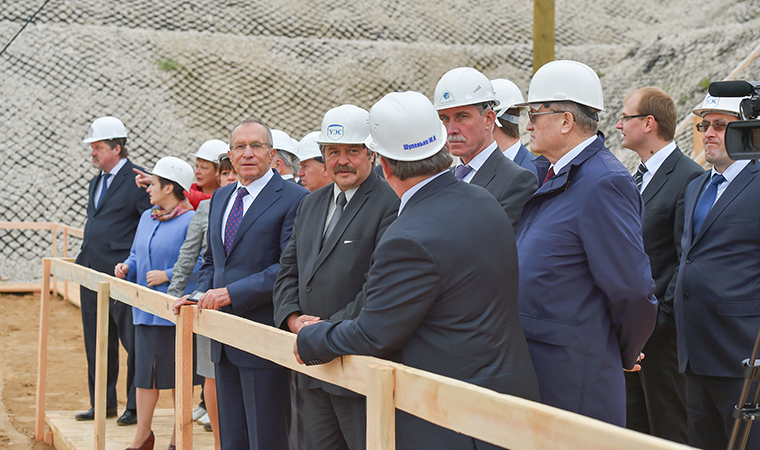
On the brink of discoveries
back to contentsMBIR will be used to do research in the fields of material science, reactor physics and safety, test new components of the reactor core, control and diagnostic tools, produce isotopes and optimize nuclear cycle technologies. MBIR will generate 150 MW of thermal power, which is 2.5 times higher than generated by the existing BOR-60 reactor built almost 50 years ago. “MBIR will reduce the time of research three to four times,” explains Vyacheslav Pershukov, Rosatom Deputy CEO for Innovation Management.
On-site preparations are completed – the foundation pit for the main reactor building is ready and waterproofed, the reactor foundation slab is reinforced and crane towers are installed. A part of auxiliary infrastructure – a concrete batching plant and a steel structure fabrication shop – is already in place. Concreting of the foundation slab began in September.
The reactor vessel will be delivered next autumn. The main construction phase will last two and a half years and will be completed in 2018, with pre-commissioning activities to follow. MBIR is scheduled for startup in December 2019 and will be commissioned in 2020.
The plans are to establish an international research center (IRC) on the premises of MBIR. Since 2011 Rosatom has organized events to acquire partners for the project and promote MBIR IRC services. In 2013, Rosatom, US Department of Energy and the French Atomic Energy Commission signed a memorandum of understanding on the cooperation during the IRC development and agreed on preliminary areas of research. “We are now in the process of drafting an agreement with French colleagues. Americans are also very much interested in the project and, since the center is international, we will not freeze our relations,” stressed Vyacheslav Pershukov. According to him, South Korea, Japan and China have asked questions about MBIR capabilities to solve their research tasks in nuclear energy.




